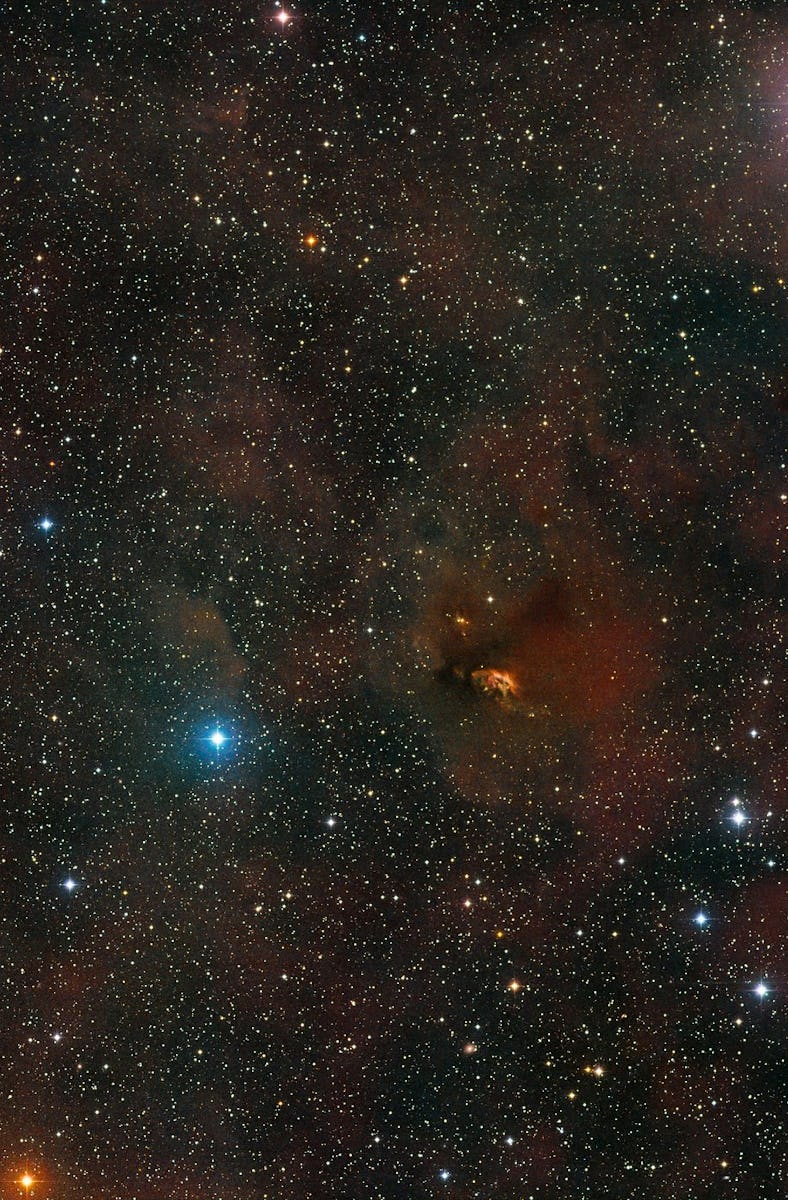ALMA Telescope Detects “At Least 3 Times” More Water Than On Earth In A Nearby Protoplanetary Disk
Planet formation and wet paper towels have something in common.

A telescope perched high in South America’s Andes gave astronomers a pleasant surprise — from a distance of 450 light-years away, it detected a significant amount of water in a disk where baby planets are likely growing.
The Atacama Large Millimeter/submillimeter Array (ALMA) in Chile detected signs of water within ring-shaped gaps of a dusty disk. This spot is where would-be planets carve out their orbits as they feast on dust and gas and grow in size. In a new image from ALMA, the water vapor of this protoplanetary disk is shown in blue.
The red rings are ALMA observations of dust wafting around the star. The blue area shows where ALMA detected water vapor.
It’s a lot of water, too. According to an announcement from one ALMA partner, the European Southern Observatory, “the observations reveal at least three times as much water as in all of Earth’s oceans” in the inner part of the disk surrounding the Sun-like star HL Tauri. There, the water could acting as a wet paper towel on a dirty counter: the water helps the dust to clump together more efficiently.
The water itself could be coming from particles containing ice, researchers surmise. “It is truly exciting to directly witness, in a picture, water molecules being released from icy dust particles,” Elizabeth Humphreys, an astronomer at ESO who also participated in the study, said in the statement.
The region where the star HL Tauri — and its protoplanetary disk — are located.
“Our results show how the presence of water may influence the development of a planetary system, just like it did some 4.5 billion years ago in our own Solar System,” Stefano Facchini, an astronomer at the University of Milan, Italy, who led a study about the new results, published Thursday in Nature Astronomy, said in the statement. Thanks to ALMA’s primed location and sensitivity, the research team found this water hiding away in the constellation Taurus.
ALMA consists of an array of 66 antennas poised at a 5,000-meter elevation in Chile’s Atacama Desert. The high and dry location provides “exceptional” observations of the cosmos, the ESO said. “To date, ALMA is the only facility able to spatially resolve water in a cool planet-forming disc,” co-author Wouter Vlemmings, a professor at the Chalmers University of Technology in Sweden, said in the statement.